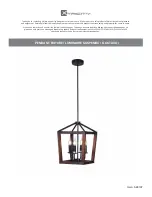
11
SANITIZATION AND DISINFECTION
- Switch off the device before all SANITIZATION AND DISINFECTION procedures and unplug the
power cable from the socket.
- Separate the unit (A) from the power, disconnecting the power cable (fig.3).
- Remove the top part (A3) from the body (Fig. 1) and the connected accessory. .
SANITIZATION
Before and after each use, sanitise the components (A-C1-C2-C3-C4-C5) by choosing one of the
methods described below.
(Method A): Wash only the unit and its accessories under warm drinking water and using a
sponge soaked in a mild washing-up liquid (non-abrasive).
(Method B):
Position only the unit and its accessories inside a plastic, porcelain or glass container
(not metal); pour a 50% water and 50% white vinegar solution directly on top of these parts. Finally,
rinse thoroughly with drinking water;
DISINFECTION
The disinfectable components are
(C1-C2-C3-C4-C5)
The disinfection procedure described in this paragraph is to be performed before using the acces-
sories and is effective only if all the prescriptions herein are met and all the components involved
are previously sanitized. The disinfectant to be used must be of electrolytic oxidizing chlorine type,
(active ingredient: sodium hypochlorite), specific for disinfection and is available in all pharmacies.
Procedure:
- Fill a container, suitable to contain all the individual components to be disinfected, with a solution
of drinking water and disinfectant, while respecting the proportions indicated on the packaging
of the disinfectant itself.
- Completely immerse each individual component in the solution, taking care to avoid the forma-
tion of air bubbles in contact with the components. Leave the components immersed for the pe-
riod of time indicated on the packaging of the disinfectant, and associated with the concentration
chosen to prepare the solution.
- Remove the components now disinfected and rinse thoroughly with lukewarm drinking water.
- After disinfection shake the accessories vigorously and place them on a paper towel, or alterna-
tively, dry them with a jet of hot air (e.g. using a hair dryer).
- Dispose of the solution as recommended by the disinfectant manufacturer.
After the CLEANING AND / OR DISINFECTION operations dry the area of the transducer, without
exerting unnecessary pressure on the transducer itself, dry the accessories and the outside of the
appliance with a paper towel or even better with a jet of hot air (e.g. hair dryer). Finally, check that
the “power plug” area of the device is completely dry.
At the end of each use store the device complete with accessories in a dry place away from
dust.
7.
Press the ON/OFF (A1) button for a moment (fig. 6); the nebulizer
LED (A2) will show a steady green light and the nebulised medica-
tion will start to come out.
8.
Regulate the supply flow by means of the special knob (A4); turn
it clockwise (po) to treat the upper airways, or anticlock-
wise (position -) for the lower airways (fig. 6).
To increase the effect of the therapy, after inspiration, hold your
breath for a second so the drops of inhaled aerosol are able to
deposit along the airways. Then expire slowly.
9.
To stop nebulisation press button (A1).
10.
When the medication is about to run out, nebulisation becomes
intermittent. Switch off the application by pressing the button
(A1). Despite the unit having a sensor indicating the presence of medication, it is always best
not to use the appliance dry (without medication).
AUTOMATIC SWITCH-OFF:
The appliance switches off automatically after about 10 minutes;
nonetheless, if you wish to continue with the therapy, simply press the button again and the
appliance will start operating.
11.
Upon completing application, switch off the device and unplug it.
- +
6
A1
A2
A4














































